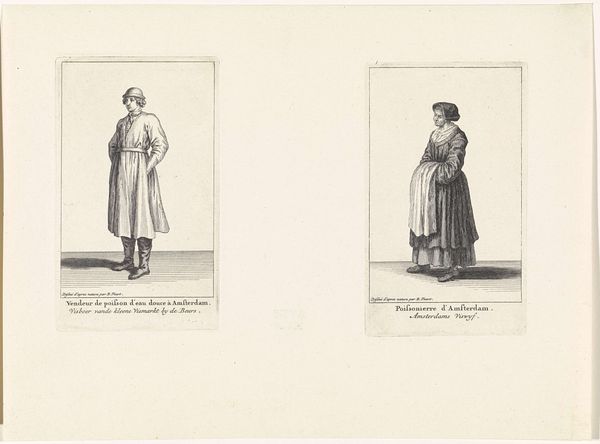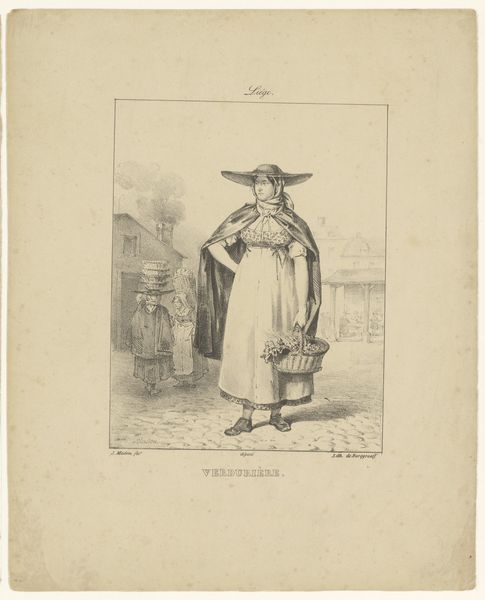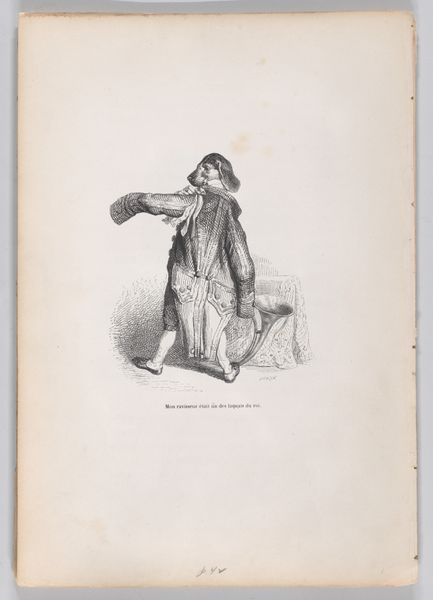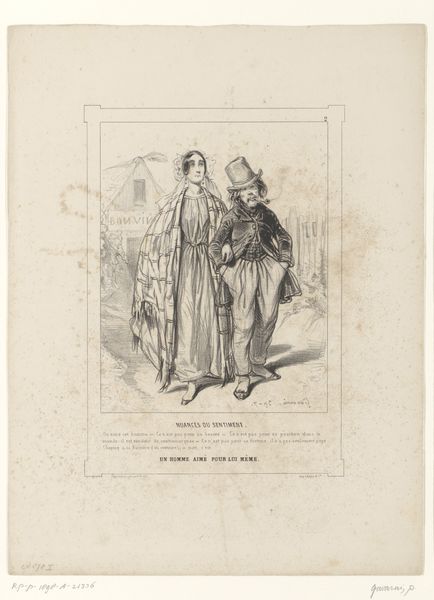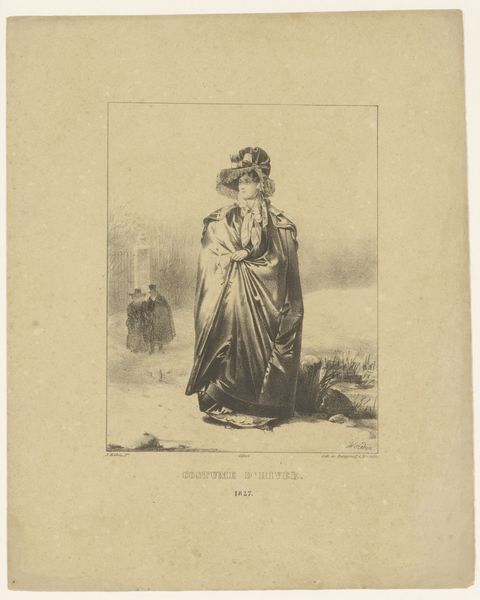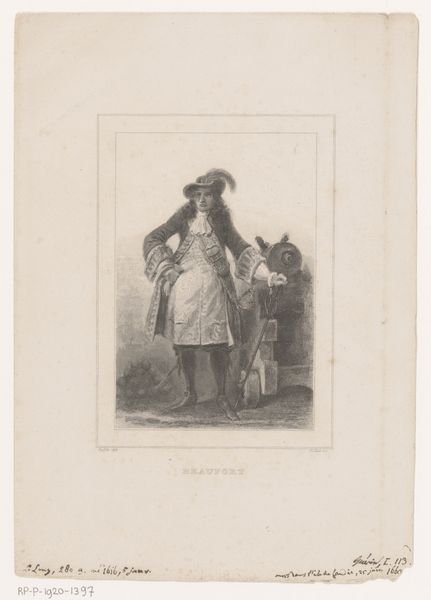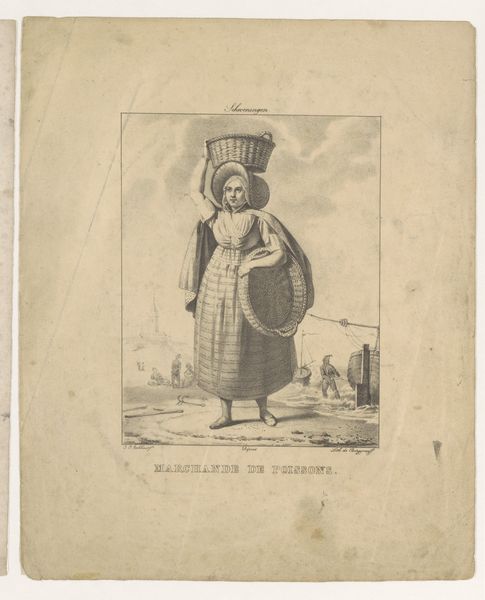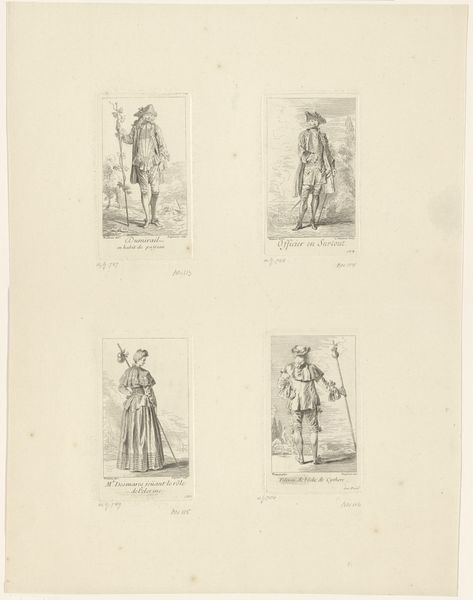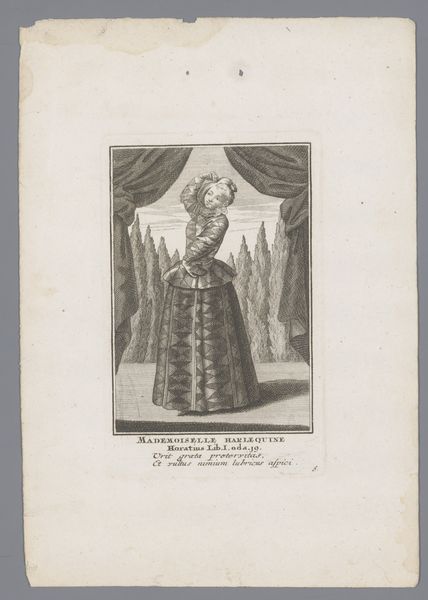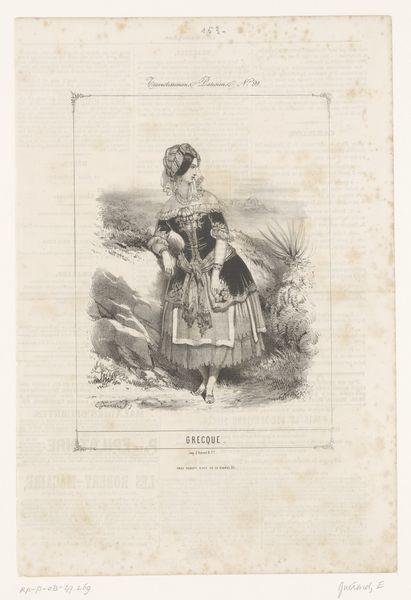
#
comic strip sketch
#
aged paper
#
light pencil work
#
light coloured
#
sketch book
#
archive photography
#
personal sketchbook
#
sketchbook drawing
#
celebration photography
#
storyboard and sketchbook work
Dimensions: height 223 mm, width 147 mm
Copyright: Rijks Museum: Open Domain
Curator: Take a look at this interesting 19th-century print by M.L. Bosredon, "Twee afbeeldingen van priesters in liturgische kleding," or "Two images of priests in liturgical clothing." Editor: My first impression? The delicacy of the lines suggests both precision and perhaps a touch of romanticism. It reminds me of engravings in old storybooks. The figures, rendered with such detail, have a kind of still, dignified presence. Curator: Exactly. Bosredon created this piece, presumably an etching, to show us the specific garments and implements utilized by priests. I'm particularly struck by the depiction of textures here. You have the ornate robes contrasted against simpler materials like wood, metal, stone. We have access to the means and materials, allowing a reading of ritual garment production as a symbol of power and hierarchy within the priesthood itself. Editor: Yes, the image does suggest social hierarchy through costume and context. Looking closely, you notice how the priest’s vestments both conceal and reveal markers of status and perhaps gender identity? Consider also how access to the objects—the censer, the ceremonial implements—are indicative of exclusive participation in ritual performance. There is perhaps more nuance here. The priestly class, almost performing the roles of social elite, and therefore in proximity to colonial power... it is very charged! Curator: That is precisely the sort of commentary I look to excavate. How were these garments sourced? Who wove them? Were certain colors or materials reserved solely for the high priest, signaling status through regulated textile production? Such works offer interesting insight to the process-oriented questions: who touched these materials? Who did the work? Editor: Precisely. What labor lies hidden within these garments and ceremonies depicted, right? Furthermore, where did these interpretations originate? How did social assumptions of gender, or religious authority impact the vision conveyed? Curator: It underscores how even seemingly straightforward illustrative work, like Bosredon’s priests, offers such opportunities to reconsider both historical making practices, as well as cultural identities, allowing fresh conversation on complex ideas. Editor: Absolutely. Seeing art this way prompts crucial questioning; considering visual representation intersects deeply across cultural, historical power, social structure...
Comments
No comments
Be the first to comment and join the conversation on the ultimate creative platform.
